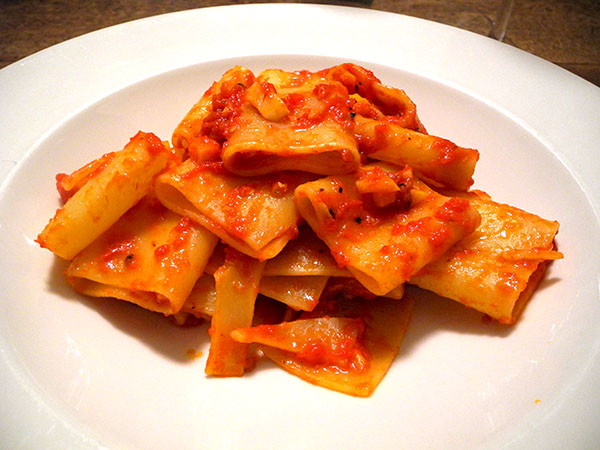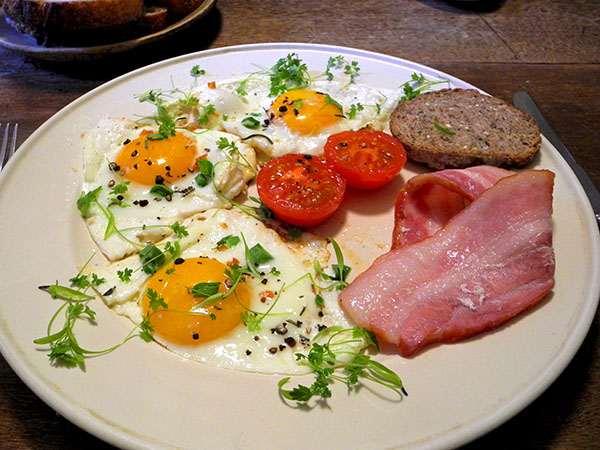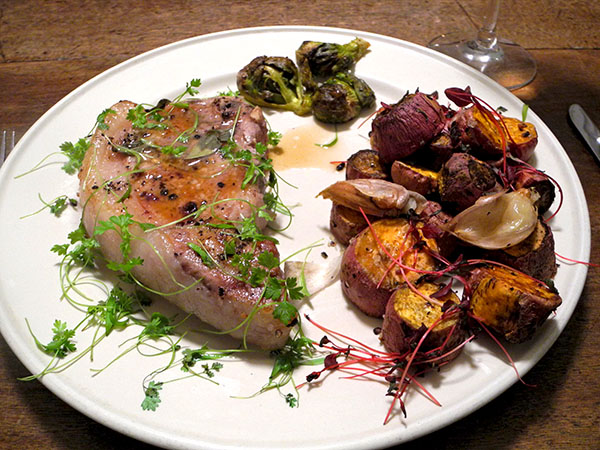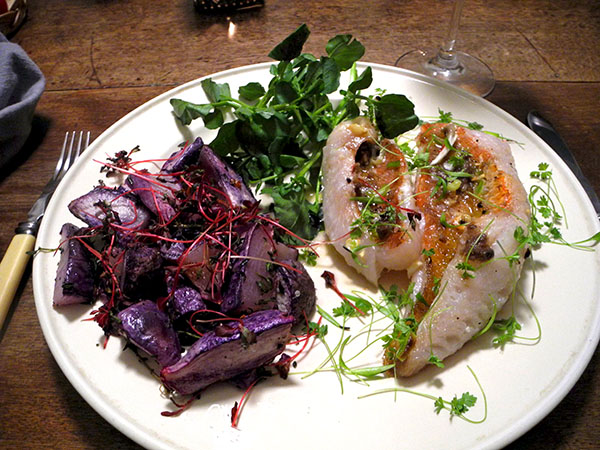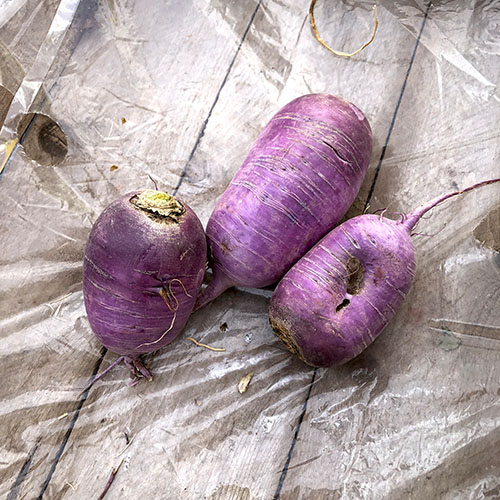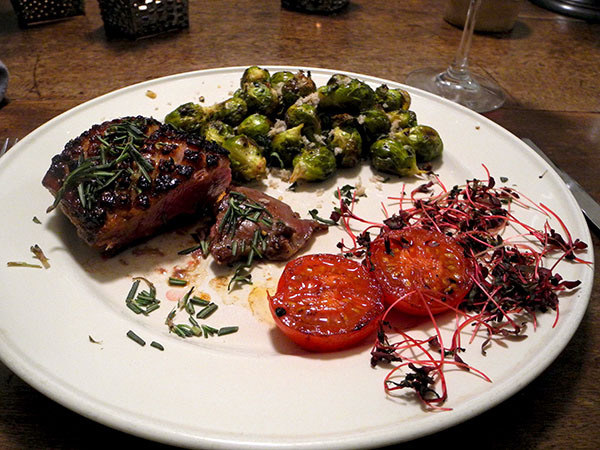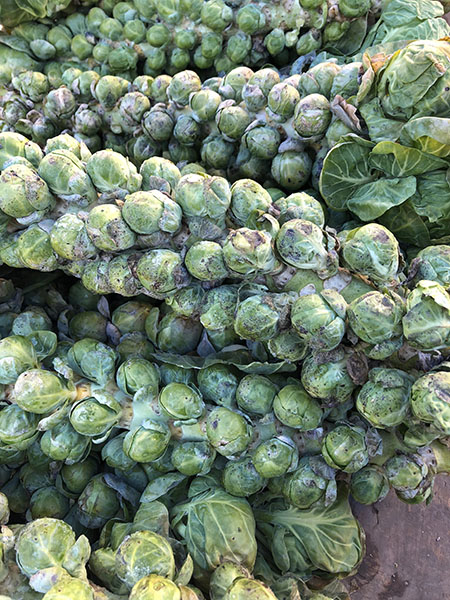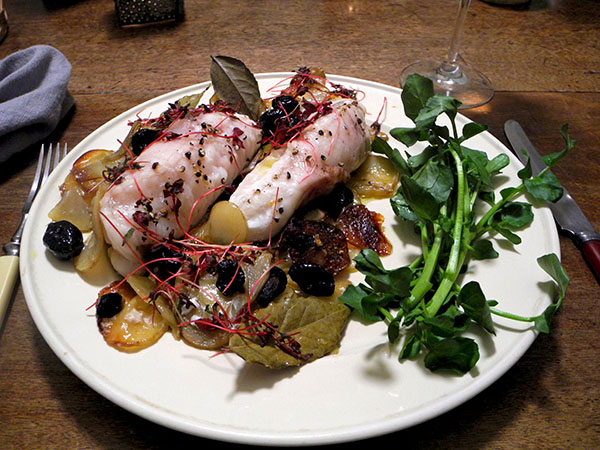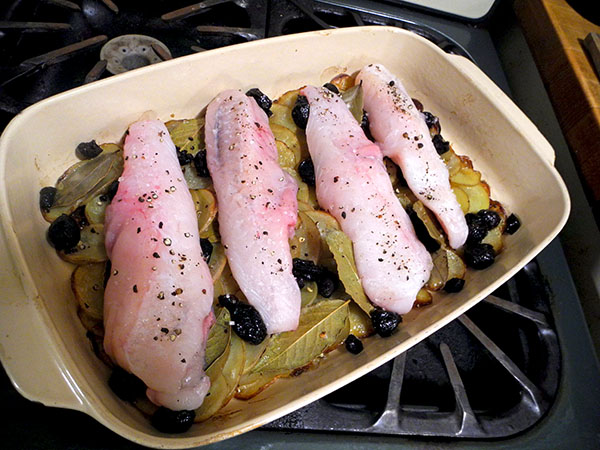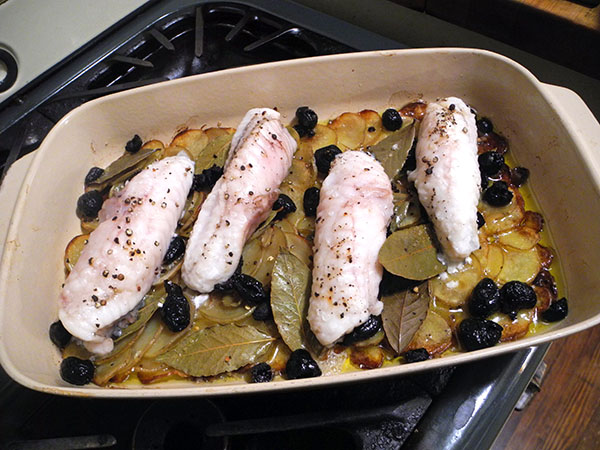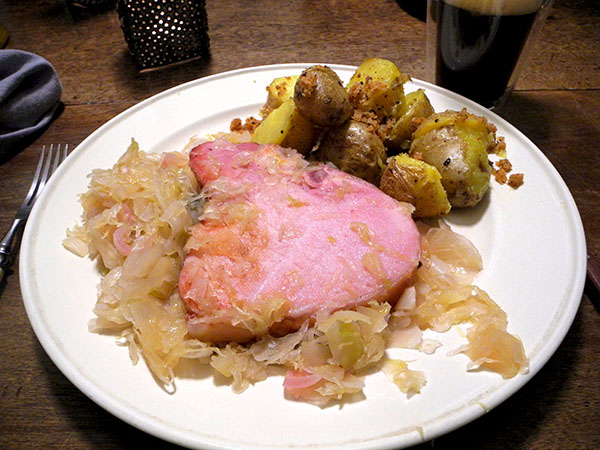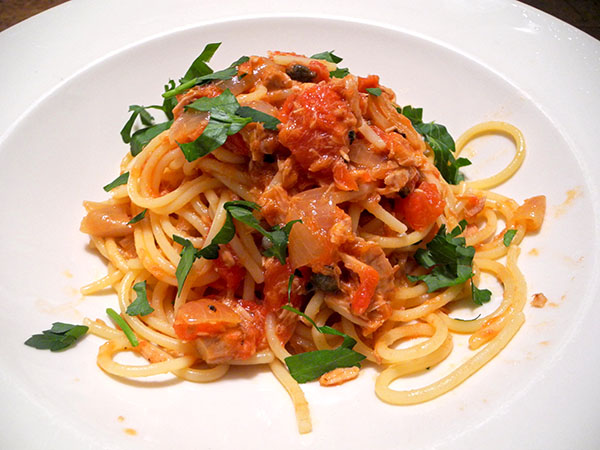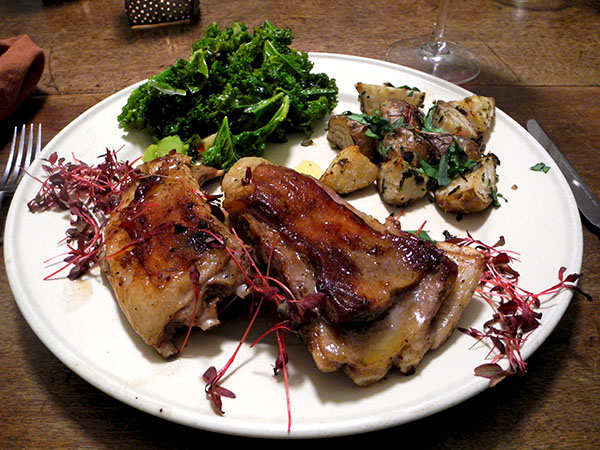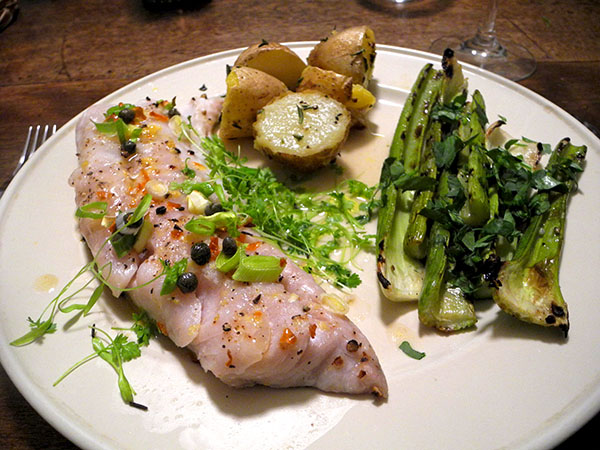
This is an absolutely terrific fish, and I did particularly well by it on Monday night, thanks to a wonderful recipe I’ve used often, with some variations, but whose origin I no longer remember.
- *one 20-ounce fillet of pollock from P.E.&D.D. Seafood, rinsed, dried, halved, and seasoned on both sides with sea salt and freshly-ground black pepper, placed skin side down inside a buttered an oval tin-lined copper gratin pan, spread with a mixture of softened unsalted Organic Valley ‘Cultured Pasture Butter’ mixed with zest from most of an organic Whole Foods Market lemon, a very little chopped Rocambole garlic from Keith’s Farm, slices of part of one Japanese scallion from Norwich Meadows Farm, and part of a piece of a crushed orange/gold home-dried Habanada pepper from Norwich Meadows Farm (harvested fresh last fall), the fish baked for about 15-17 minutes at 350º, removed to 2 plates, the cooking juices poured over the top, and a teaspoon or so of Sicilian salted capers, which had first been rinsed, drained, dried and heated briefly inside a small antique enameled cast iron porringer in a bit of olive oil, scattered over the fillets, with that oil, the pollock finished with a garnish of micro chervil from Two Guys from Woodbridge
- *Nicola potatoes from Tamarack Hollow Farm, boiled with a generous amount of salt until barely cooked through, drained, halved, dried while still inside the large still-warm vintage Corning Pyrex Flameware blue-glass pot in which they had cooked, tossed with 2 tablespoons of rich Organic Valley ‘Cultured Pasture Butter’, sprinkled with sea salt, freshly-ground black pepper, and then some chopped winter savory from Stokes Farm

- *several stalks of celery (noting here that this is in late January) from from Phillips Farms, their leaves removed and and the best reserved for another day, trimmed, tossed with olive oil, sea salt, and freshly-ground pepper, pan-grilled until slightly carbonized but still pretty crunchy, finished with lovage from Two Guys from Woodbridge.
- the wine was a New Zealand (North Coast) white, Shebang, North Coast White ‘Cuvee IV’, NV, from Flatiron Wines & Spirits
- *the music was an absolutely fantastic album, in both conception and execution, ‘Time Present and Time Past’, Mahan Esfahani performing, with Concerto Köln, music by Johann Sebastian Bach, Carl Philipp Emanuel Bach, Francesco Geminiani, Henryk Górecki, Steve Reich, Alessandro Scarlatti, and, on digital tracks, G.F. Handel, works which were either composed for or transcribed for his preferred instrument, the harpsichord
